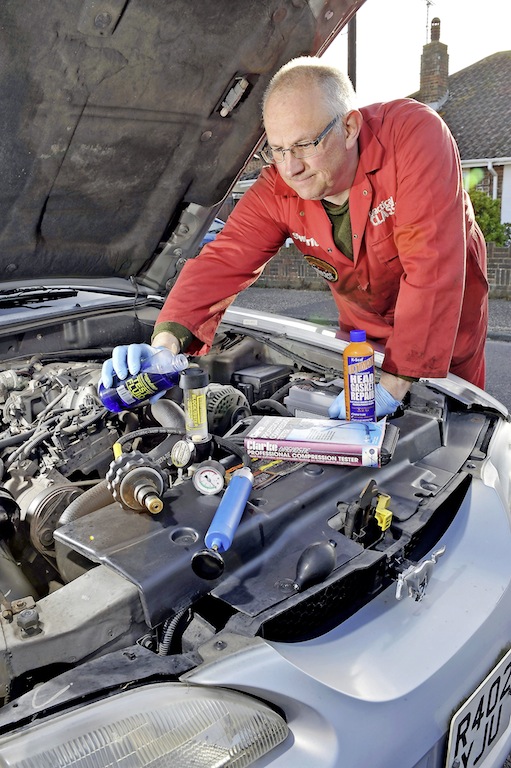 Head gasket failure is a logical conclusion, but don’t assume the worst yet. First, top up the radiator with the engine cold and park the car overnight with the radiator cap off. In the morning, feel for wetness around all hose stubs, hoses, core plugs, the water pump and its spindle, and any other parts of the engine that might allow water to escape.
Head gasket failure is a logical conclusion, but don’t assume the worst yet. First, top up the radiator with the engine cold and park the car overnight with the radiator cap off. In the morning, feel for wetness around all hose stubs, hoses, core plugs, the water pump and its spindle, and any other parts of the engine that might allow water to escape.
Look also for evidence of ‘furring’ where coolant has crept out. Examine the radiator cap for damage to its seals or springs. Also look at the heater valve and at the matrix housing.
Leaking hose stubs can be cleaned with a wire brush and coarse abrasive paper. Don’t forget to remove scale from the rubber hoses, too. Reassemble with a little silicone grease. If the joint continues to weep, seal it with plumbers’ PTFE tape. Check for dodgy hose clips.
Leaking gaskets should be replaced or temporarily resealed with a gasket sealing compound. Radiators and heater matrixes can be professionally rebuilt, but defects such as a pinhole in the soldering can be satisfactorily sealed with a radiator sealer added to the coolant.
If all of this draws a blank, then the head gasket begins to look like the primary suspect. Release the radiator cap halfway to relieve pressure (cover it with a thick rag) and then remove it. With the engine running, smell the filler neck for petrol or exhaust fumes, which would indicate a head gasket leak. Examine the oil filler cap for a heavy build-up of mayonnaise-like gunge caused by water in the lubrication system and, with the engine cold, run a finger round the radiator filler neck to check for fresh oil. A tiny bit of mayonnaise or greasy residue may be nothing to worry about.
Finally, see if the system’s being abnormally pressurised. With the engine hot and running, repeatedly tighten, then half-release the radiator cap at intervals of about ten seconds. If a lot of pressure has built up, this is sign of a failed head gasket. Again, cover the cap with a thick rag.
If you do need to change the head gasket, check the head for warping and its mating surface for imperfections, and get it skimmed if you find either. Also look out for sunken liners on wet-liner engines.

The best methods ever in operation.
how do you stop headlamps leaking in water
Not a great way to check for coolant leakage,no mention of how to check if the Cylinder head or block is cracked .Apressure check would be a far better way and could save you money and time !